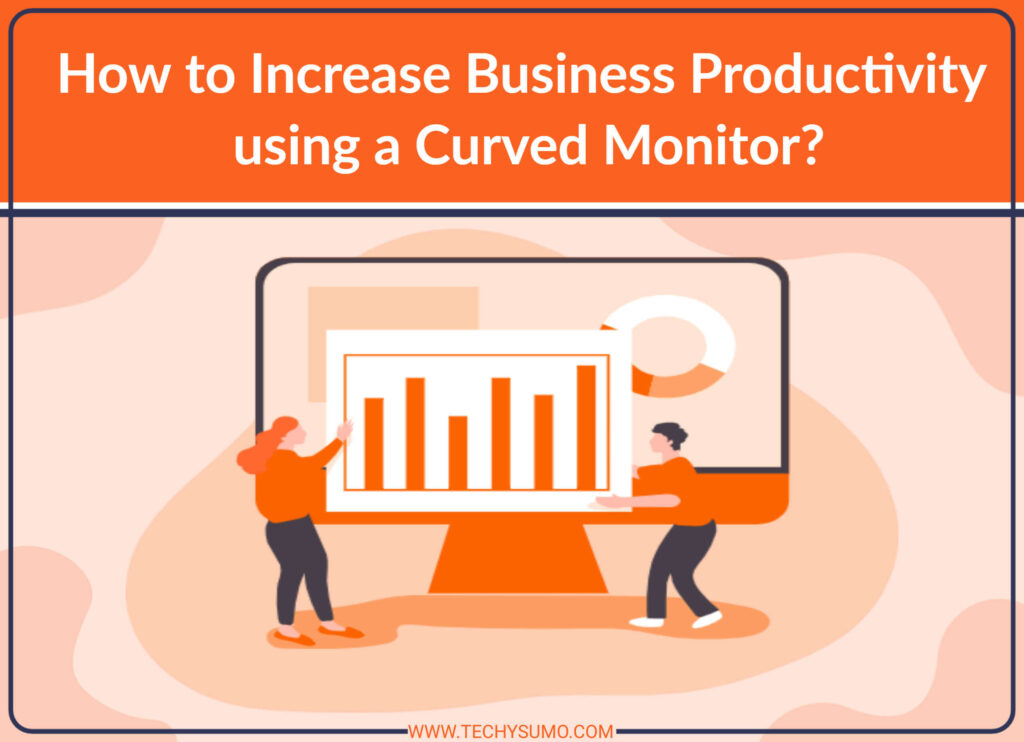Have you been wanting to start a profitable blog to earn income online?
If so, you’ve come to the right place. In this post, I’m going to be outlining everything you need to know about starting a successful blog step-by-step, start to finish.
Blogging can be an extremely lucrative business when done right. You’d be surprised if you knew just how many people are making money online with their blogs…
Think about it – search engines like Google are processing over 3.5 billion searches every single day from people who are looking for answers to their ‘questions’.
Your goal as a blogger?
To provide high-quality content that will not only answer those ‘questions’ but also captivate your readers and eventually, turn them into leads (customers).
Alright, let’s get started…
Why You Should Start a Blog

Starting a blog is probably the easiest way for anyone to get involved with internet marketing and start earning money online.
It’s simple: you start a website about a topic of your choice and then create a lot of high-quality content that people will search for in order to build an audience.
Here are some examples of very successful blogs that are making a lot of money:
Digital Photography School: They write a lot of content about photography tutorials, post-production, etc., and make money by placing ads and promoting Amazon products as an affiliate in the “Cameras & Gear” section.
Freshome: They write a lot of great content on design and architecture, and make money with ad placements as well as reviews promoting affiliate products.
Money Saving Mom: Successful blog about personal finance and coupon savings. Makes money by promoting various affiliate offers (such as coupon apps) and promoting her own product (which she is building a targeted email list for).
Get an idea?
Starting a blog won’t make you rich overnight – however, it’s possible to make a full-time income (and much more) by blogging.
For example, Michelle from the Making Sense of Cents blog is able to bring in over $70,000 a month with her blog.
She didn’t get there overnight – her income is a result of consistent hard work and dedication over a long period of time.
An impressive 409 million people read more than 22.6 billion blog pages each month and that figure is only going up. This should give you an idea of just how powerful blogs are as a platform for business.
The Pros and Cons of Blogging

Although blogging is a great way to earn passive income, it has upsides and downsides like any other business model.
Before you go ahead and create your blog, you should be sure that you fully understand both the positive and negative aspects to blogging so that you aren’t unpleasantly surprised later on.
Pros
Great way to establish an online passive income: Since our principal strategy for getting traffic is ranking our content in search engines, our work ends once we are done writing that piece of content and doing SEO (Search Engine Optimization). So once you start getting a lot of well-ranked content, you’re making money consistently – even when you’re sleeping.
Doesn’t require any significant investment besides domain name and hosting: Again, since most of your traffic will be coming from search engines, there’s no need to invest in paid ads. And since you have access to all of our free content, you don’t need to buy any expensive training program – all the training you need is available for free on this blog 🙂
Blogging can pave the way to interesting opportunities: It’s not uncommon for popular bloggers to be offered paid guest writing gigs, consultations, interviews, appearances on shows and webinars, columns in magazines… It’s a great way to build a name for yourself in whichever niche you are writing about, and any publicity is good publicity.
Cons
Writing good content isn’t easy: This is especially true if you aren’t an actual expert in the niche you are blogging about but it applies either way. Good content must contain a lot of valuable information for your readers – this requires very intensive research and can get quite tedious at times.
Big time commitment: Since writing good content takes a long time and we need a lot of it, blogging requires a lot of time and consistency to succeed. On top of that, you also need to take care of all your marketing and plenty of other time-consuming tasks.
Takes a while to start seeing results: If you’re expecting to make significant money within a couple of weeks, blogging isn’t probably for you. It takes a lot of time to make enough content and start ranking in search engines – therefore, you can’t really expect to see any big results within the first few months.
To sum it up: blogging can be a great fit for you if you’re willing to put a lot of time and hard work into it, even when you aren’t making any money or when no one is reading your content.
It definitely isn’t easy and requires tremendous commitment but can potentially be an extremely profitable investment in the long term.
Choosing the Right Niche for Your Blog

As mentioned above, starting a blog is a huge commitment and since picking the right niche is at the foundation of your whole blog’s success, it’s important to spend the time to do it right.
Google is constantly updating its search algorithms to improve user satisfaction – in fact, is it updated once a day on average.
Essentially, this means that your content needs to bring actual value to your visitors. The more satisfied users are with your content, the more your search engine rankings will increase.
So what does this have to do with picking a niche?
To write great content, one either needs to be very passionate OR very good at what they are writing about. Or even better yet, both.
If your blog is about something you are passionate about, staying committed through all the hard work will be much easier as you will be learning about something you enjoy along the way.
However, having passion in itself won’t guarantee your blog’s success. There are plenty of other factors that you should consider when you brainstorm for possible niches.
Personal Expertise in The Niche

The more knowledgeable you are about the niche, the easier it will be to write high-quality content that will actually help your users.
And since we are focusing on user satisfaction, being able to do this is extremely really important.
Having prior expertise about your niche will also make coming up with great ideas for content much easier since you are involved in the community and are better aware of the trending topics and discussions.
If you’re not an expert on anything worth blogging about, don’t worry – you aren’t alone.
In this case, you just need to make sure that you are passionate about the niche you pick. That way, you won’t be bored while researching and writing content – and you’ll also be learning a lot about something you are interested in.
Trend

It’s important to think about the tendency of the trend factor for your niche. Since your blog is a long-term investment, you need to make sure that people are still going to be searching for your content in the future.
You can learn more about the trend factor for your niche by using the Google Trends tool.
A good example of a niche you wouldn’t want to tap into right now is radio. There’s been a steady decline in the interest for the search time over 6 years – definitely, not a market you want to jump into right now.
As long as the interest isn’t steadily going down like in the example above, you shouldn’t have to worry too much about the trend.
Competition

Having a lot of competition isn’t necessarily a bad thing – if there’s competition, it means there’s a lot of money to be made.
If you have an authoritative website and more budget to spend, having competition is a great signal that there’s money to be made in that niche.
However, having a lot of competition also means that you will need to put in more effort to have your content stand out from the rest.
For most people, picking very targeted niches with low competition works great. This makes getting organic search traffic a much easier task and therefore people tend to start seeing results sooner.
However, since these niches are also much more specific and uncommon, you won’t be getting tons of visitors to your website and hence don’t have as much money-making potential.
There’s no perfect amount of competition for blogging – it ultimately depends on how confident you are in your ability to rank your content.
For beginners, I recommend staying away from highly popular niches such as weight loss.
Creating Your Blog

Now that you know which niche you want to blog about, it’s time to actually create your blog. The best platform to do so is without a doubt WordPress – in fact, one in four websites are powered by WordPress.
WordPress gives you the option to start a free blog hosted by them – although this can seem like a great option, this also has a lot of downsides:
- “www.blogname.wordpress.com” domain
- Ads placed on your website
- No plugins
- No custom themes
- No real control over your blog
In order to access all the benefits of WordPress, you will need to have your own domain and hosting account. Then, you can install WordPress on your site and exercise full control over your blog.
I highly recommend buying your domain and hosting from SiteGround. They are extremely trustworthy, have amazing customer service, live chat, and reliability, and offer a quick “one-click install” for WordPress.
Adding More Functionality With Plugins

What’s great about WordPress is how flexible the platform is in terms of customization. Using themes and plugins, you can easily add all the functionality and design you want to your site without a hassle.
Plugins are basically extensions that you can add to your blog to do a certain function – they can automate tasks and overall just make your life as a blogger much easier.
You can find a plugin to do just about anything you can imagine, which is in part what makes WordPress so powerful.
Here are some quality plugins that I use for all my blogs and highly recommend. Although there is some amazing premium plugins, I’m only gonna be showcasing free ones in this list.
Askimet: This plugin boasts more than 1 million active installs and a perfect 5-star rating for a reason. What this plugin does is completely protects your blog from spam, making sure every comment you get is real.
Wordfence Security: Since you’re going to be putting a lot of work into your blog, it’s protecting yourself from hackers who could potentially wipe all of your content. Overall an amazing plugin that gives you complete peace of mind about your blog’s security.
Yoast SEO: This plugin is meant to make the SEO work on your site a breeze. It has a lot of great features to help you optimize your page content, image titles, meta descriptions, and even upload XML sitemaps.
Shortcodes Ultimate: This code supercharges your theme with a bunch of design features such as tabs, buttons, boxes, sliders… Includes more than 50 shortcodes to use on your blog absolutely free.
W3 Total Cache: A great plugin that helps improve your website’s performance dramatically. This plugin is a must-have, especially since a 1-second delay in page response can result in a 7% reduction in conversions.
These are just a few of my personal favorites out of the thousands of plugins available.
Customizing Your Blog’s Appearance With Themes

Themes are pretty straightforward – they are made to customize the appearance of your blog. By default, WordPress uses their yearly theme “Twenty Sixteen”.
Now, depending on whether you like it or not, there are plenty of other options for you to choose from.
You can find plenty of free themes that are ready for use by going to the Themes section on your WordPress dashboard.
Although there are a lot of free options to choose from, a lot of people prefer using Premium themes for their blogs. These tend to be more visually appealing and packed with a lot more functionality straight out of the box.
The biggest platform for selling premium WordPress themes is ThemeForest, with over 6000 themes for sale.
Picking a visually appealing theme is more important than most people think. In fact, 75% of users admit to making a judgment about a website’s credibility based on the design according to Stanford’s Guidelines for Web Credibility.
Therefore, you should make sure that you pick a good, professional-looking theme to build credibility for your blog.
What I usually recommend is to start off with a free theme and upgrade later on when you start generating traffic and making money by blogging.
Writing Content to Start Getting Traffic

So, you have your blog set up with WordPress and you know what niche you are going to be targeting.
What do I do now?
Well, arguably the hardest part. You need to write high-quality content for your blog – and a lot of it.
This is how you will be getting visitors to your site – you want to be ranked in Google for some searches related to your niche. That way, you are getting free potential customers sent to your website.
Google is updating its algorithm at least once a day on average with the goal in mind to increase its user satisfaction. For a search engine, this translates to returning the very best content to answer the searchers ‘questions’.
This means that now more than ever before, marketers need to be focusing on writing content that will provide actual value to the readers.
Here are some things you should consider when writing content to make sure you’re optimizing for user satisfaction.
Targeting Keywords With High User Intent

By targeting specific key phrases rather than just broad keywords, you know exactly what the searcher is looking for and therefore should be able to write content that will satisfy them.
These kinds of keywords (called long-tail keywords) also have a much higher click-through rate and conversion rate, while having less competition than the broader keywords
I actually wrote an entire blog post on finding long-tail keywords with high user intent because of how important I think it is, so make sure to read that at some point.
Good Page Structure and Formatting

Since this is something that has been tested and experimented on for years now, most content marketers agree on what a good post structure should look like. Here is a quick breakdown:
Attention-grabbing headline: Having a great headline can be the difference between successful and unsuccessful content. Only viewers who are drawn in by your headline are going to read the rest of your page, which is your headline needs to be as attention-grabbing as possible.
Sub-headlines: You want to break down your content into smaller, more focused parts. This is really important as a lot of people tend to skim through pages – therefore, having attention-catching sub-headlines will make sure your page gets read.
Short paragraphs: Break down your content into short paragraphs of 2-3 sentences. This makes it much easier for the readers to take in all the information on your page and overall makes for a better user experience.
Lots of images: Images are one of the best ways to catch your reader’s attention. In fact, content with relevant images gets 94% more views than without. You want to make sure you are adding plenty of relevant and original images to your content.
Lists: People love lists. Using numbered or bulleted lists is a great way to make your content easier to digest and understand. Plus, the indentation will draw the reader’s eye. Win-win!
You should also try to aim for your content to be at least 1500 words in length. Not only will this mean more value to the searcher, longer posts tend to rank higher in search engines according to a study conducted by SerpIQ.
As you can see, the average content length is above 2000 words for the top 10 search results. It’s also been found that longer posts get shared significantly more and get more backlinks for SEO.
There’s no magical number for the right word count that will get you top rankings every time, but there is a clear trend that longer is better.
Always Research What You Write!

Unless you are one of the leaders in the niche you are blogging on, you won’t be able to write the best content available without research (and you aren’t expected to be able to).
If you want your readers to be satisfied, you shouldn’t be trying to take any shortcuts – you should genuinely be trying to give your viewers the best content possible.
Researching every post you write up will take a very long time and will seem very tedious at first, but will pay off in the long run.
Promoting Your Content

As hard as creating high-quality content is, your work doesn’t end there.
There are over 2,000,000 new blog posts being published every day – this means it’s now harder than ever to make your content stand out and get seen.
For your articles to start ranking in the Google search results, you’ll need to manually promote them and push to get them right under your audience’s eyes.
Only then will your blog start naturally gaining authority and performing better in search engines. No matter how good your content is, it’s completely useless if it isn’t seen.
Here are some surefire methods that you can use to promote your blog content:
Blogger Outreach

This method is long and boring, but it actually works.
Basically, you send out personalized emails to popular bloggers in your niche asking for your content to be shared.
Although most people you contact will ignore your request, a small percentage of them will share your content and sometimes even give you a backlink.
Here’s a quick rundown of the important steps:
1. Get noticed beforehand – Comment on their blog posts, share their content on social media… People are much more likely to open your email if they recognize your name and if they see that you’ve been actively helping their blog out, it’s not unlikely that they won’t do the same for you.
2. Personalizing your email – Successful bloggers get tons of automated outreach email every day and if your email doesn’t stand out, they probably won’t read it. You can personalize the email by asking a question about one of their posts, complimenting their work or really anything that will catch their attention.
3. Asking for your content to be shared – Once you’ve gotten noticed and personalized your email, it’s time to invite them to share your content. Wait for the right opportunity and make sure you don’t seem desperate!
Guest Posting

A great way to get noticed in your niche is by writing for other top bloggers.
Most successful bloggers have a hard time consistently producing content and therefore will gladly publish your post if it meets the blog’s standard.
Getting on other successful blogs doesn’t only increase your authority in the niche but will also draw in a steady amount of traffic to your blog through your author bio.
Here’s what you need to do:
1. Find a good post idea – Successful bloggers get a lot of guest post ideas pitched to them. To stand out, you need to find an original idea for a post that matches their audience really well and that they will want to publish on their blog. I recommend coming up with at least 3 good ideas to suggest to them – this will increase your odds of getting the gig by quite a bit.
2. Pitching your idea – Send them an email asking them to write for their blog. Be polite and don’t hesitate to compliment their work – treat them like an actual person and be friendly. Tell them your post ideas and try to sell to them why it would be a great addition to their blog. Here is a template of what your pitch email could look like:
3. Write the post – If you get the green light from the blogger, it’s time to actually write the post! Don’t rush it – make sure that the post is as good as you can make it. That way, you will look good not only to that blogger but to their audience. Check out this list of blog sites to boost your outreach campaign.
If you’d like to learn more about promoting your blog content, I highly recommend you read this post: Boost Your Traffic: 11 (Free) Methods To Promote Your Blog Posts
Monetizing Your Blog
Finally, the exciting part!
There’re many different ways to generate income from your blog once traffic starts rolling in.
Most successful bloggers have multiple income streams from their blogs. For example, Darren Rowse from ProBlogger has at least 12 different sources generating revenue for his blog.
Here’s a breakdown of the most popular (and most efficient) ways to monetize your blog:
Using Google AdSense
AdSense is a super easy way to establish a stream of income for your blog.
It’s an advertising network run by Google that displays ads automatically tailored for your site’s content, making it extremely easy to get up and running.
In order to get started with AdSense, you must submit your application here.
Once you’re done, you will get an email from them relatively soon letting you know if your site got approved or not.
You should get approved first try but in the rare instance that you don’t, they will provide insight on what went wrong and how you can fix it.
Once you get accepted, you need to integrate AdSense directly into your blog. This is made really easy on WordPress by using this plugin.
Once you’ve got this plugin, setting up ads on your website becomes a piece of cake.
The key to doing well with AdSense is testing different ad placements and seeing what is performing better with your audience.
Here is a heat map of possible ad placements for your site and how well they tend to perform – the darker, the more optimal.
The general trend is that the closer the ads are to your content, the better they perform.
It is very important to find the right balance between your content and these ads in order to maintain a professional impression.
To make a lot of money with AdSense, you’re gonna need a constant flow of traffic coming to your site.
That’s why banner ads like these tend to perform best on news and trending content sites that get millions of visitors every day.
However, setting up a few well-optimized ads can still be a solid stream of income to add to your blog.
Promoting Affiliate Products
Another very popular form of monetization for blogs is by promoting affiliate products.
For example, if you look at Pat Flynn’s monthly income breakdown, you will see that the majority of his earnings come directly from affiliate sales.
He makes this much money by recommending products to his blog audience and getting commissions for every sale he refers.
As you can see in his fully detailed income reports, the majority of his massive affiliate revenue comes from a select few products that he personally trusts and promotes to his audience.
The affiliate marketing spend in the United States alone is predicted to reach 4.8 billion in 2016 and is quickly growing – this means that there’s a lot of money to be made right now.
How Do Affiliate Programs Work?
Simply put, if someone buys a product using your unique affiliate link, you receive a commission.
What’s fantastic about this system is that it enables you to make sales without having anything to sell.
You can just recommend high-quality products relevant to your audience from established companies and receive commissions for getting them sales.
Finding Affiliate Programs
The fastest way to find affiliate programs to promote is by joining affiliate networks.
Affiliate networks basically act as a middleman between the advertisers (companies with products to sell) and the publishers (you).
Here are some of the best places to start when looking for affiliate products to promote:
Clickbank:
Clickbank has been up and running for over 17 years now and remains one of the best affiliate networks today (In fact, Clickbank got nominated the best affiliate network of 2016).
It is a marketplace for digital information products and has over 6 million unique products to choose from with commissions up to 80%.
One downside with Clickbank is that a lot of the products on there are low-quality and seem spammy, which may hurt your website’s credibility.
However, if you know how to identify these low-quality products and stay away, Clickbank can be a total goldmine.
Amazon Associates:
This, in my opinion, is the best starting point to find products to promote.
If you haven’t been living under a rock for the past couple of years, I’m sure you are familiar with Amazon. They are the largest internet-based retailer in North America and yes, they have an affiliate network!
You can promote any product on Amazon and get commissions up to 10% (although usually lower).
Rakuten Marketing (Formerly Linkshare):
Rakuten Marketing is a huge but exclusive affiliate network with over 90000 different products from more than 38500 shop owners and businesses.
They have some of the best affiliate marketing technology in the world and rank amongst the top 3 e-commerce companies in the world.
Multiple companies also offer affiliate programs without any affiliate network, so you should also spend time researching what the best-performing affiliate programs for your industry are.
How to Integrate Affiliate Offers
How you choose to integrate these affiliate products is entirely up to you, as the best way to do this varies from niche to niche. Here are some ideas:
- Product reviews
- ‘Top 10 …’ kind of lists
- Scattered throughout your blog posts
- Banners
- In your emails (if you haven’t already, I would strongly recommend reading the Beginner’s Guide to Email Marketing)
- etc…
Once again, remember that we are focusing on user satisfaction and building long-lasting reader relationships.
Therefore, only pick products that you are proud to promote and actually believe will provide your reader value.
Selling Your Own Product
Another very powerful way to monetize a blog is to launch a product.
It doesn’t have to be anything complicated – it could range from being a simple eBook to a complete online course as long as it is relevant to your audience
The perks of selling your own product are not only that you keep all the profits for yourself, but you also keep the customer and get to continuously re-market to them and get more sales.
For example, Darren Rowse from ProBlogger revealed that the main income stream for his blog is the sale of his personal eBooks.
Another example of a blogger having success selling their own product is Spencer Haws from Niche Pursuits.
Being an authoritative expert on starting and building profitable niche sites, Spencer saw a big market gap for quick and efficient keyword research software.
As a result, he launched Long Tail Pro and used his blog to promote the launch. Today, Long Tail Pro is a successful multi-million dollar business.
More Ways to Monetize Your Blog…
As your blog grows and becomes more popular, you find more opportunities to make money using your blog.
Consulting/Coaching
If you have the reputation of an expert in a niche, people will come looking for your advice on certain things. It’s easy to monetize this by offering consulting and/or coaching services on your blog.
This works best when you’re considered by many an expert in your niche, and you have valuable information to give.
People like Neil Patel who is known by most internet marketers as a leading SEO expert make a significant amount of income by offering his consulting services.
Paid Speaking
Once again this requires you to be a known expert in your niche but if you are, it is an awesome way to make money while promoting your personal brand at the same time.
In order for this to work, you must be very comfortable with public speaking and have the skills to prepare an interesting presentation.
Membership Site
Another great way to monetize your blog is by turning it into a membership site, giving access to certain content or tools to premium subscribers.
Blog Marketing Academy released their ranking of the best blog monetization methods and surprisingly, membership sites came up on top of the list.
They offer membership on their own blog in the shape of the “Blog Monetization Lab” which contains all their exclusive content and courses for $390.
Using this method to monetize your blog can work great depending on how much time and effort you are willing to put into creating awesome content worthy of a premium membership.
Selling Your Blog?!
Although this isn’t technically a blog monetization technique, selling your blog is a great way to make anywhere from 12-24 * your blog’s monthly revenue up front without too much hassle.
There’s a huge market online for buying and selling websites that are making money, and very sophisticated platforms that exist to make the act easier.
The best place to start when trying to sell your blog is Flippa, the most popular destination for buying and selling websites.
There you can easily list your blog for auction to be viewed by thousands of buyers with cash in hand, ready to buy.
Conclusion
Starting a profitable blog definitely isn’t easy and requires a tremendous amount of time, but can be a great way to make passive income online.
If you are seriously thinking about starting a blog, I invite you to subscribe to my newsletter so that you can receive the best content & tools in order for your blog to succeed.




